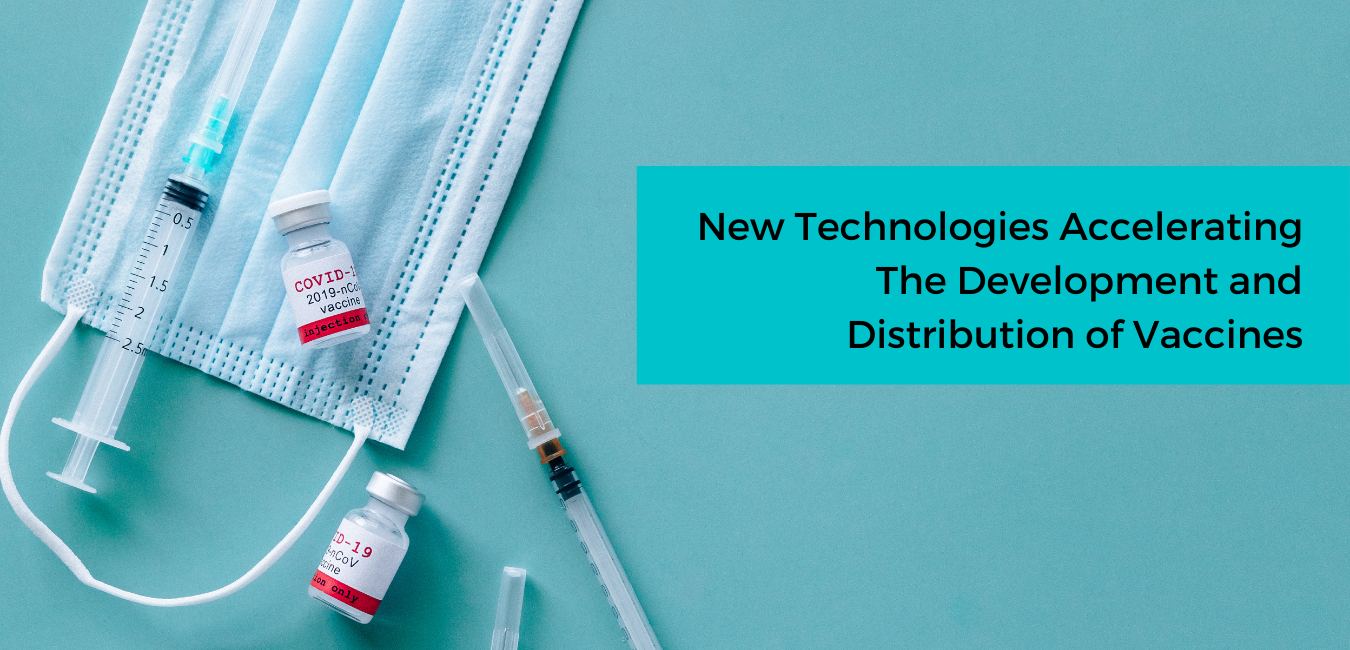New Technologies Accelerating The Development and Distribution of Vaccines

It wasn’t until the COVID-19 pandemic hit us that the world took vaccine development seriously. Why do I say so? The process was so slow that it used to take years or even decades to develop a vaccine targeted at a particular microbe. Having said that, the importance of vaccines is way beyond just a means to control diseases. Instead, it is a path that leads to a healthier and happier tomorrow.
But gone are those days. The COVID attack in 2020 propelled the use of new innovative technologies to augment conventional vaccine development. The idea was to ensure rapid delivery of the vaccine to start clinical trials as soon as possible.
But ever thought what changed in the last couple of years?
Well! The scientists started using new innovative vaccine platform technologies. They are a means that enable researchers to make more than one vaccine. You might be aware of the FDA licensed Ebola vaccine that uses another virus as a platform with the Ebola protein. This technology is enabling the organizations involved in the vaccine development process to shorten the initial development process.
Did you know that an RNA vaccine approach used by the Cambridge-based biotech firm, Moderna, took only around 40 days to create an experimental vaccine? Another company in Pennsylvania used a DNA vaccine approach to make antibodies.
But that’s only a start! In this article, we’ll focus more on the trends in vaccine development and distribution and what to expect in the future.
Let’s get started!
Decoding Trends in Vaccine Development and Distribution
Vaccine Development: Unraveling the Evolution
Until the 20th century, the most significant achievement was developing vaccines to prevent deadly childhood illnesses. That’s how infectious diseases like smallpox got wholly eradicated from the world. Not only that, but the vaccines were also favorable in eliminating infections like diphtheria, tetanus, poliomyelitis, measles, rubella, and so on.
But then, there was a shift in vaccine technology. The application of genetic engineering allowed scientists to target new infections/ diseases. The progress is towards improving health-based outcomes. However, much preference is towards morbidity rather than mortality is causing a much bigger issue.
Scientists are working towards developing vaccines that not only improve mortality data but are also affordable. For example, HPV vaccines are resulting in fewer cervical cancer cases. They are simultaneously reducing the costs related to medical expenses like pap smears or colposcopies.
Thanks to the newfound technologies, one can virtually clone the entire viral genome into bacterial or yeast vectors. In simple terms, there is an increase in the customization of the vaccine design now. For instance, let’s take an example of the Influenza vaccine. Its surface proteins can be cloned into plasmids. In fact, the scientists confirm that the use of plasmid-based technology allows the researchers to hasten the production of reassortment vaccines.
Who knows, one could even create vaccine cocktails against different pathogens by integrating different proteins in a single vector? Further, intradermal delivery of the vaccines is another way to beat infectious pathogens. Besides this, mucosal delivery is also gaining a lot of attention because of its benefit of not requiring any needle.
Quite evidently, the arrival of new agents, vaccines, and genomics are turning the tables now, driving the process to evolve and change.
But what about vaccine distribution? Is technology aiding in this process as well? Let’s find out below.
Vaccine Supply Chain: What’s Changing?
With the COVID-19, everyone understood the importance of an uninterrupted supply chain. That’s the only way to balance the demand and supply of vaccines in normal and new normal circumstances.
Luckily, we live in an age where the use of AI, blockchain, and cloud is snowballing. One can use the same technology to improve the visibility of the supply chain along with real-time tracking.
For instance, the use of blockchain could enhance the security of digital transactions. Not only that, it could help generate a record of vaccine components and the vaccine itself. It might also help the providers determine the viability of the vaccine if somehow the shipment gets delayed.
Further, the use of AI could help with quality control in vaccine manufacturing and distribution. For instance, AI-powered automation could help the distribution on time. An array of IT tools could help track, store, and distribute millions of doses of the vaccine.
Many healthcare providers switched to RFID tags and 2D barcodes during the mass development of coronavirus vaccines. That helped them reduce errors and ensure the traceability of vaccines. Again, the temperature-controlled containers were of importance for a Pfizer BioNTech vaccine. So, they came up with a container equipped with a GPS beacon and a temperature monitor to ensure its viability.
What else?
The Internet of Things also has a pivotal role regarding different steps in vaccine development and distribution. For instance, the Vaccine Credential Initiative announced that it would improve the digital infrastructure of coordination and record keeping.
Moving forward, the management of the data and maintaining integrity will be on the minds of the providers.
What’s the Role of Government in This?
It goes without saying that if one wishes to achieve these futuristic goals, the government's support is very critical. An end-to-end approach must be coordinated well between the private and public sectors.
This is why the government must provide academic incentives and invest well in the private sector to boost innovation.
Final Takeaways: What The Future Might Hold!
We already know that the mRNA vaccine is already approved. But this will further help the researchers pace the way for supporting such vaccines for other diseases. In fact, work is already in progress about using similar vaccines for influenza, cytomegalovirus, HIV-1, rabies, and other viruses.
Experts exclaim that the designs and the rapid production of mRNA vaccines could be groundbreaking innovations to control quickly changing viruses like influenza. The use of technology in the distribution of these vaccines could further ensure the safety and needs of the masses, especially during unprecedented times.
So, what will be the significant change in the vaccine development and distribution? Share your ideas with us!










